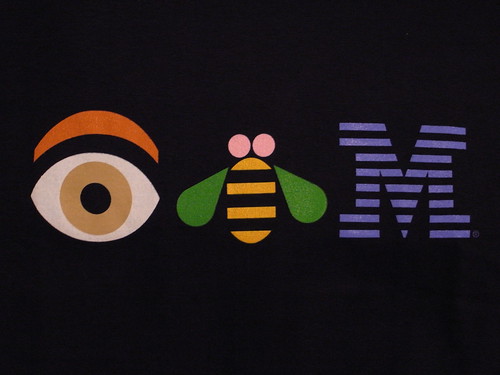
I can't quite pinpoint exactly when I first saw Parmelee's 1953 adaptation of Poe's "The Tell Tale Heart". It was sometime around 1992-1993 on the Channel 4 animation strand, 4-mation, possibly as part of a Halloween special (also featured that night was The Sandman). I was video-taping these animations fairly regularly at that time. But there was something about "The Tell Tale Heart". It was creepy and strange and old. It wasn't like the other animations. James Mason narrates, frantically. There is very little animation, lots of montage and the camera drifting around still images which illuminate, then fade away. And it is nightmarish. Not in the sense of horror and gore, but more personal, the backgrounds symbolic, stripped to the core, all subconscious and weird.
It seems pitched in so many camps. Surrealism, expressionism, Freudian, a little Victorian, modernist. The interior world of the protagonist is slowly turned inside out, becoming the exterior. The investigating police are shadowy cut-outs of authority, without character or personality. A fearful THEM in silhouette. The Old Man is hideous, decrepit and frail. His frailty makes us hateful. His eye montages into a rotten, pitted moon. The house is an Escher like puzzle, all doors and stairways. Grandfather clocks without faces or workings, the pendulum still swinging. There are windows but no walls. Nightmarish.
Paul Julian was the designer and colour artist for the film. Julian had a career with Warner Brothers and created the voice of "Road Runner". His designs for "The Tell Tale Heart" were influenced by theatre set designer and artist Eugene Berman, a Neo-Romantic and Surrealist, who had exhibited with other explorers of the subconscious, Dali, Duchamp and Man Ray. It is the language of Surrealism which is used to visualise the mind of the narrator. Looking at some of Berman's designs- gates without walls, structures we can see through- relates to a dream logic, of objects we can understand because they exist according to rules we have created within our dreams.
Julian went on to co-direct "The Hangman" - very much in the vein of "The Tell Tale Heart"- in 1964.
Eugene Berman's theatre designs
Julian went on to co-direct "The Hangman" - very much in the vein of "The Tell Tale Heart"- in 1964.
Ten years after the Poe adaptation, "The Hangman" echoes with the nightmarish weirdness of it's predecessor. In Post-Kennedy America, this call for equality and compassion - framed in surrealist horror- was more acceptable, less perverse than the slippery, damaging, psychological web of "The Tell Tale Heart". Although Poe's story was first published in 1843, the internal horrors of the psychopath of the story were given flight and vision in the 1953 animation - a medium of fun and laughter, seven years before Norman rented rooms in the Bates Motel. "Psycho" has been called the "first psychoanalytical thriller". "The Tell Tale Heart" was bested by a cartoon with a singing owl.









































